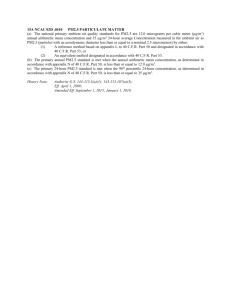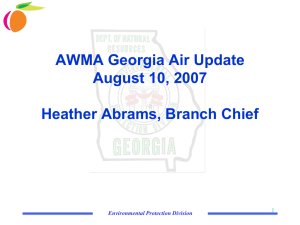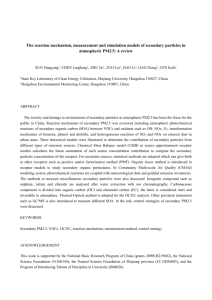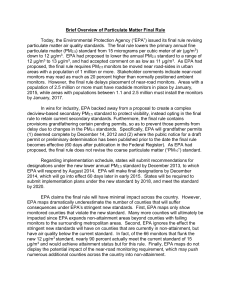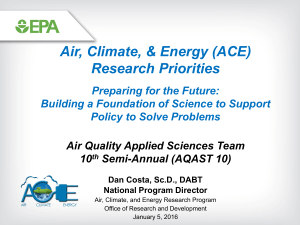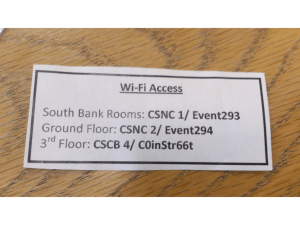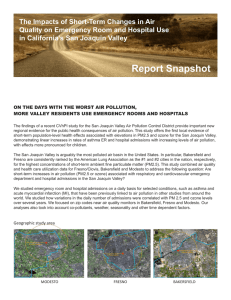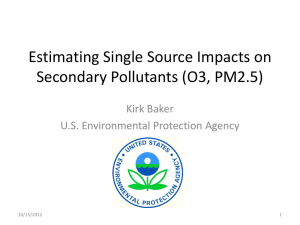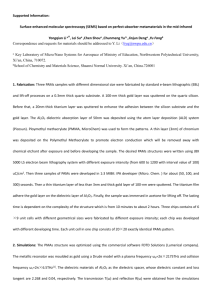National Monitoring Steering Committee Report
advertisement
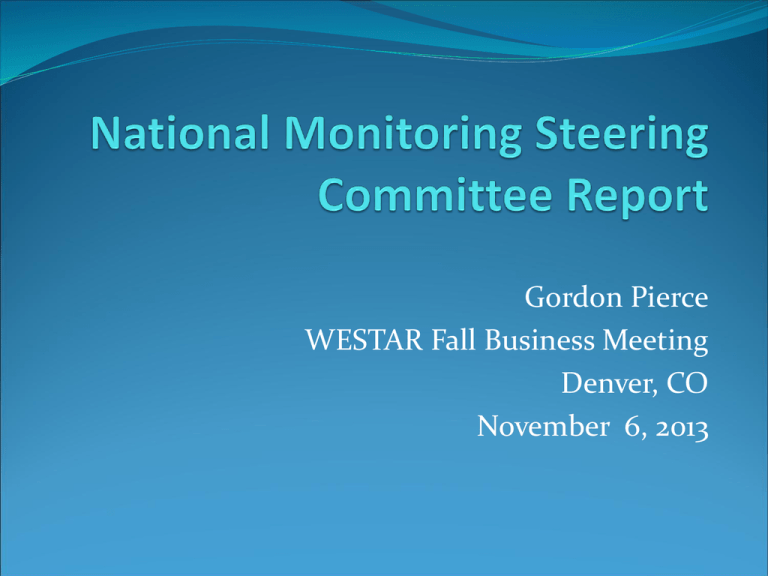
Gordon Pierce WESTAR Fall Business Meeting Denver, CO November 6, 2013 CSN Assessment Need to make the CSN network sustainable Currently 190 sites Objectives of CSN: Support PM2.5 implementation Support trends analyses Aid with health studies Need to: Leverage other resources (IMPROVE, PAMS, etc.) Redistribute resources to higher priority sites CSN assessment: Target 30% reduction in budget Assess network effectiveness and efficiency Develop recommendations by end of 2013 2 PAMS Re-engineering EPA still looking at changing the PAMS network, probably associated with next ozone NAAQS Now have consensus on a network design: NCore sites in ozone non-attainment areas State-directed enhanced ozone in non-attainment areas Required analytes: O3, NO, true NO2, NOy, hourly VOC, aldehydes, mixing height Auto-GC evaluation will occur Need to update date analysis tools 3 PM2.5 Monitoring Implementation Agencies need to list in annual network plans how they are using continuous PM2.5 data FEM-like? Need to request that not to be used for NAAQS comparisons (a template is now available) PM2.5 Continuous Monitor Comparability Assessment Tool is available on web and has recently been updated ORD is not working on PM methods at this time PM2.5 methods still have issues: Met-One BAM needs good grounding and is affected by humidity Thermo 2025i has software issues Thermo TEOM 1405 has a new valve available 4 Near-Road NO2 Rule finalized to add 1-year to the implementation timeline to sync with budget and available funds Phase 1 now required by 1/1/2014 (instead of 1/1/2013) Phase 2 now required by 1/1/2015 (instead of 1/1/2014) Problem: Funding for Phase 1 has all been allocated, but sequestration has now affected available funds for Phase 2 Plan is to look at 2014 budget to find funds for 19 Phase 2 sites Will assess data after 1 or 2 years to see if need for Phase 3 sites (500,000 MSAs) to see if need by 1/1/2017 or revise rules to eliminate 5 Monitoring Rules EPA is starting to look at common-sense revisions to monitoring rules in 2014 Clarify QA (40 CFR 58 Appendix A) Reduce data certification requirements Clarify monitoring network plan requirements Revise NO2 network timeline Are trying to avoid OMB review, so will stay away from hot-topics at this point Send any comments/suggestions to Lew Weinstock 6 SO2 Technical Assistance Documents New TAD allows for use of actual emissions instead of potential-to-emit In-house testing has showed that the model performs fairly well Problems with TAD: Data requirements rule missing which would specify the threshold of sources to look at Doesn’t address short-term peaking units No specifics on number of monitoring sites required 5-minute exposures not addressed Monitor shut-down not addressed for when sources have major emissions reductions or shut down Monitoring vs modeling timeframes are different Send comments to EPA 7 Air Toxics Carbonyl measurements are problematic Formaldehyde is the #1 risk driver on NATA Existing sampling and analysis methods have known issues Metals proficiency test samples are only provided on quartz-fiber filters, but many agencies using teflon filters for samples Many of the TO methods are out of date and should be revised Possibly use some of the PAMS analysis funds to work on carbonyl and other methods 8 Lab Competency Policy Agencies required to have competency/certification documentation if receive over $200,000 Not supposed to be an additional burden Implementation being pushed back to 2014 Labs do not have to be certified, but if they are, it can be used as documentation to satisfy the policy QAPPs can be used as documentation to satisfy the policy A list of acceptable documents is to be developed by EPA 9 Community/Citizen Monitoring Had some good discussions at the meeting Will be discussed in Hot-Topics session later 10 Next Monitoring Conference now set for August 2014 in Atlanta Next MSC meeting December 4-5, 2013 in San Francisco Questions? 11
